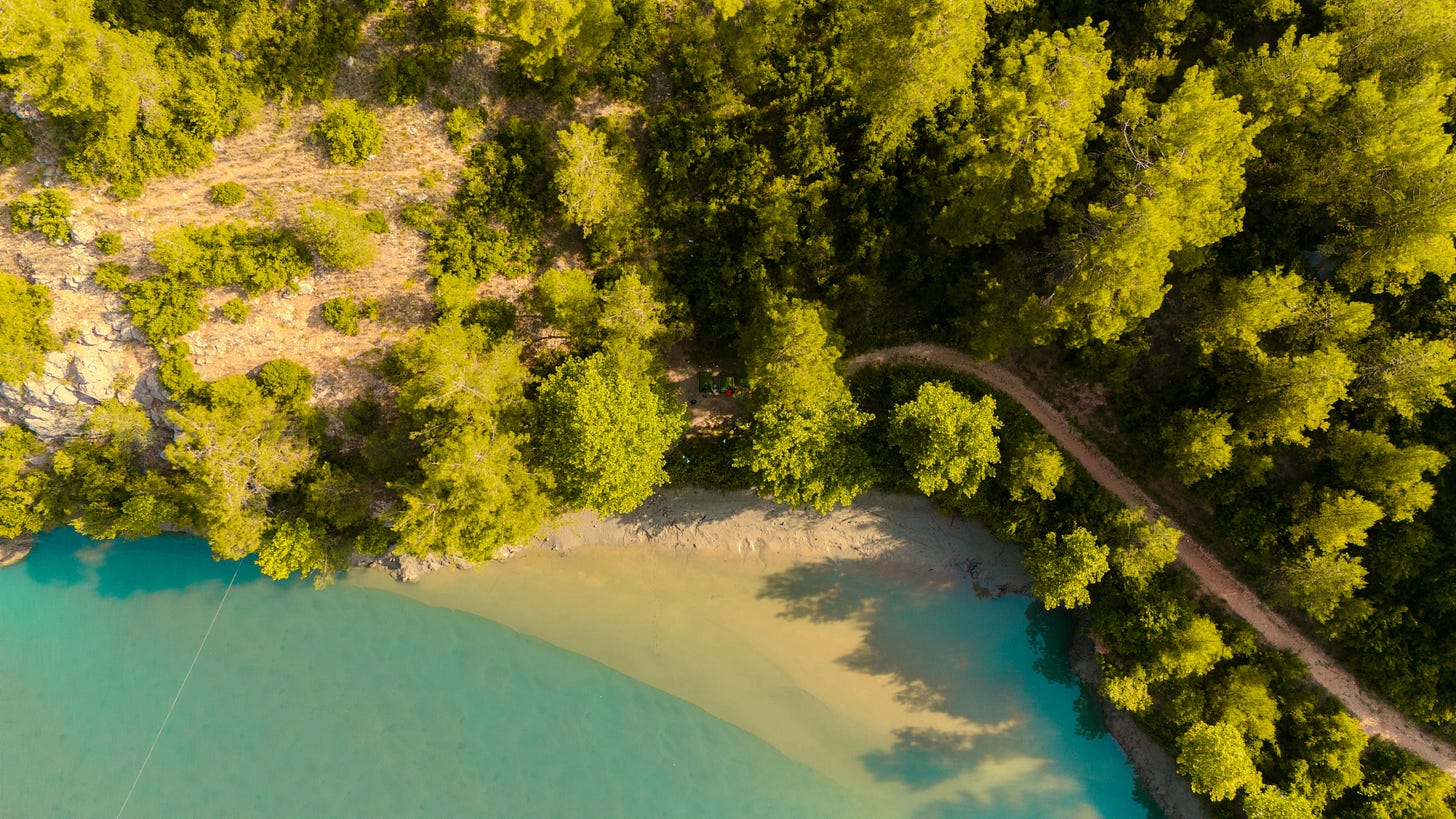Prefigurative Community Building (Part 34)
Reweaving the Watershed: How to Start a Bioregional Stewardship Network Using Power With Principles

Rivers don’t care about county lines. Soil doesn’t respect zoning laws. Salmon can’t read property deeds. And yet we govern living systems with rules designed for bureaucracies, not biospheres. It’s not working. In the face of cascading crises, climate collapse, ecosystem exhaustion, and food system fragility, we don’t just need better policies. We need a different foundation for governance entirely: biocentric governance.
Biocentric governance asks us to coordinate not by political convenience but by ecological reality. It means aligning our efforts with watersheds, food webs, and forest corridors, not mayoral districts or voting blocs. But it also asks something deeper of us: a shift in power. Not power over nature or each other, but Power With the living systems we’re embedded in.
This is where bioregional stewardship networks come in. Unlike top-down NGOs or state-sanctioned conservation, these networks build regenerative relationships between communities and the places they call home. They do this through collaboration, not control. Through care, not coercion. They are a pattern of Power With: decentralized, participatory, reciprocal.
This guide outlines how to start a watershed council or bioregional stewardship network rooted in Power With principles, offering practical steps and links to tools at each stage, plus examples of thriving models already doing this work.
Step-by-Step: Starting a Power With Bioregional Stewardship Network
Step 1: Identify the Bioregion (Start with Watersheds)
Begin with the land, not a logo. Identify your local watershed, bioregion, or ecoregion. Use topographic and hydrologic maps to understand where water flows, where forests cluster, where soils shift. Your “jurisdiction” is not a line on a map, it’s a pattern of life.
Resources:
Step 2: Convene a Listening Circle, Not a Board
Bring together neighbors, Indigenous stewards, land workers, herbalists, scientists, unhoused folks, kids, elders, anyone who lives in the bioregion, not just those with “expertise.” Don’t plan. Listen. Ask: What do you notice? What do you love? What’s hurting?
Create horizontal space: sit in a circle, share food, use talking pieces, translate language as needed, and allow time for silence. This step establishes your foundation as one of Power With: collective noticing and mutual respect.
Resources:
Step 3: Map Flows, Pressures, and Gifts
With the group, begin mapping the bioregion’s ecological flows (water, food, waste), points of pressure (pollution, erosion, land grabs), and community gifts (knowledge, seeds, labor, space). This helps identify leverage points for stewardship and regeneration.
Use participatory mapping methods, draw maps by hand, use open-source GIS, or walk the terrain together. The goal is collective situated awareness, not technical precision.
Resources:
Step 4: Co-Design Projects, Not Services
Select one to three small regenerative projects. It might be stream restoration, invasive removal, seed saving, traditional fire stewardship, or de-paving urban lots. What matters most is how you do it: with mutual accountability, consent, and care.
Avoid institutional capture. Instead of applying for big grants or contracting experts, start slow and local. Use time-banking, resource-pooling, or gifting economies. Rotate leadership, keep roles transparent, and let relationships evolve.
Resources:
Step 5: Connect with Other Watershed Nodes
As your local stewardship grows, reach out to other communities in the bioregion. Instead of building a pyramid or franchise, create a rhizome. Share learnings, swap seeds, cross-train, while staying rooted in place. This keeps care local and coordination resilient.
Frame this not as expansion, but interdependence. What emerges is a distributed bioregional meshwork, capable of stewarding whole ecosystems, one community at a time.
Resources:
Two Living Examples of Power With Stewardship Networks
1. Salmon Nation (Cascadia)
Salmon Nation is a cultural and ecological bioregion stretching from Northern California to Alaska. It supports local projects and Indigenous stewardship, using storytelling and distributed coordination to protect water systems and traditional lifeways.
2. Ecovillages of Colombia’s Cauca Bioregion (Red Kunagua)
Kunagua is a network of regenerative communities across the Andean-Amazonian transition zone. It weaves together water protectors, farmers, Indigenous communities, and youth movements to steward rivers and revive local governance.
Conclusion: From Governance to Belonging
The meta-crisis, of climate, meaning, inequality, and extinction, is not just ecological. It’s a crisis of disconnection. We’ve forgotten how to belong to place. Biocentric governance reminds us. And bioregional stewardship networks are how we remember together.
But if we replicate the same power dynamics we’re trying to dismantle, like top-down control, expert gatekeeping, extractive growth, we’ll lose the thread. That’s why Power With is essential. It prevents harm before it starts. It centers disability justice, Indigenous rights, and ecological kinship from day one.
This isn’t about scaling up. It’s about rooting down, again and again, in place after place, until the land remembers us as we remember it.
So let’s begin again. With soil, with water, with each other.



